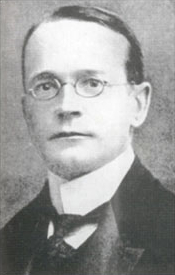
By the mid-1920s, Joseph McCabe, a former Franciscan monk, was clearly established as one of the leading lights of Rationalism. He was the author of a stream of books, including freethought classics such as The Bankruptcy of Religion and The Social Record of Christianity, a tireless lecturer on evolution and other topics, a veteran of the debating platform, and a regular contributor of articles to The Literary Guide, the monthly magazine of the Rationalist Press Association.
In the summer of 1925, McCabe set out for an overseas tour of lectures that started in Chicago. His three-month stint of lecturing in that city was a dispiriting experience. He had travelled with 500 lantern slides on evolution, but the small audiences he attracted convinced him that this was a topic of little interest in that city.
One encouragement he received during his stay in Chicago came from the publisher Emanuel Haldeman-Julius, who contacted McCabe and commissioned him to write five articles on the Catholic Church for The Haldeman-Julius Monthly. McCabe also agreed that, once his work in Chicago was finished, he would, at the start of the new year, visit Haldeman-Julius in his Kansas hometown of Girard.
When, in the mid-afternoon of a Monday morning in the first week of January 1926, McCabe stepped off the train in Girard, his visit did not get off to a smooth start. McCabe was easily provoked to irritation, and he quickly became annoyed when, despite what had been agreed with Haldeman-Julius, there was no one there to meet him. After a frustrating wait, a car drove up and a stranger approached him. ‘You come from Mr Haldeman-Julius?’ snapped McCabe. The answer was, ‘I am Haldeman-Julius’.
The publisher whisked McCabe off to his home, where McCabe was soothed by a meal and the flattering attention of Haldeman-Julius’s wife, Marcet, who was later described by McCabe as ‘the most charming and intelligent woman in America’. Once McCabe had eaten, he was taken by Haldeman-Julius into the centre of Girard to visit the company’s offices, print shop, and warehouse. The experience was for McCabe both revelatory and thrilling. Haldeman-Julius was, he now saw, not a small-town publisher but the head of a massive publishing enterprise that was selling books by the million.
The business on which Haldeman-Julius had built his success was the publication of hundreds of Little Blue Books. These were small booklets of exactly 64 pages, 3.5 inches x 5 inches in size, printed in eye-strainingly small 8-point type, stapled and bound in the thin blue card covers that gave the series its name.
His printing shop was equipped with modern presses that turned out a quarter of a million books a day and the warehouse held around eleven million books at any one time. The business was at the time entirely mail-order, and there was a highly streamlined operation to process the thousands of orders that arrived each day. It was the scale and efficiency of all this that led to Haldeman-Julius being dubbed the ‘Henry Ford of Literature’.
Before McCabe left the next day, he had accepted a commission to write fifty Little Blue Books that were intended to make a complete case against religious belief. Over the next year McCabe wrote these books at the rate of one a week and in time overall sales would reach nearly two million copies. Complete sets of these booklets are now almost impossible to find on the antiquarian or second-hand market, but second-hand copies of individual booklets appear for sale from time to time and each one is a miniature freethought classic.
Following the success of these little books, Haldeman-Julius commissioned from McCabe a series of even bigger projects. They were an expansion in ambition, but also an expansion in a literal sense because Haldeman-Julius had decided to start producing larger-sized books that typically ran to the length of 30,000 words but were sometimes longer. These larger-format booklets would, inevitably, be known as Big Blue Books.
Over the next twenty-five years or so, McCabe would write more than 140 of these longer booklets and around seventy more Little Blue Books. His prodigious output prompted Haldeman-Julius’s wife to declare that she had always believed that her husband had more concentrated energy than anyone else—‘until I met Joseph McCabe’.
McCabe was indeed a workaholic. This was partly out of necessity (because, following separation from his wife, he had to support two households) and partly due to a compulsively industrious inclination. He researched and wrote seven days a week, either in the study of his small house in Golders Green or in the magnificent setting of the British Museum Reading Room.
In the years immediately following his fifty Little Blue Books, McCabe wrote The Key to Culture (a superbly ambitious attempt to summarise modern knowledge in forty booklets), a 360,000-word sternly-critical history of the Catholic Church, a six-volume series on love and sex, a twelve-book history of human morals, a six-book series on the Rise and Fall of the Gods, a 107-page study of the Catholic Index, seventeen booklets containing the biographies of ‘one hundred men who moved the world’… and many more.
In my book, which is being launched today (9 May 2025), Joseph McCabe: The Haldeman-Julius Years, I examine McCabe’s work for Haldeman-Julius and the way in which their collaboration—the publishing wizardry of Haldeman-Julius and the endlessly energetic authorship of McCabe—produced so many books of real significance and value. A number of those books were direct critiques of Catholicism. These books were bitterly attacked by Catholic papers and organisations, and one of the areas of focus in my study is McCabe’s authorship of those books and the efforts made by the Church to condemn and even suppress them.
In 1930, Haldeman-Julius had committed himself to a ‘full program of truth-telling in reply to the lying claims and pretensions of the Roman Catholic Church’ and, over the years, McCabe was an enthusiastic contributor to that campaign. It was for McCabe a continuation of a direction that he had pursued in the first quarter of the century, in a series of books written for the Rationalist Press Association—for example, his Decay of the Church of Rome and The Popes and their Church.
The studies that McCabe wrote criticising Catholicism inevitably attracted pushback from the Church. For example, when, in 1922, the English publisher Harmsworth published a Universal Encyclopaedia, Joseph McCabe’s name was listed in advertisements as one of the ‘expert contributors’. But after complaints about his involvement started to appear in Catholic papers, McCabe’s name was quietly dropped from the advertisements.
The McCabe series that was the most controversial—and caused the greatest trouble for Haldeman-Julius—was a run of Big Blue Books on contemporary Vatican politics. This series had its origins in the mid-1930s when McCabe began to take a close interest in the relationship between the Vatican and fascism. In 1935, Haldeman-Julius published a series of essays in which McCabe examined what he identified as Pope Pius XII’s fascist sympathies and two years later, McCabe wrote a book on that subject for the Rationalist Press Association—The Papacy in Politics Today.
Once the Second World War was underway, McCabe judged he had enough material for an extended series exposing papal support for—or at least tacit collusion with—fascism and he wrote to Haldeman-Julius with a suggestion:
Catholic Fascism has been turned loose on the world in an attempt to kill democracy and liberalism. I suggest that you let me tell my complete story. You are the only man in the world with the courage enough to print what I have to say.
Haldeman-Julius immediately sent McCabe a cable commissioning ten booklets, each of 15,000 words, in a series that was to be published as The Black International. These little booklets, each of thirty-two densely printed pages, were an indictment of the record of the support the Axis Powers had been able to obtain from Eugenio Pacelli, first as the Vatican Secretary of State through the 1930s and then, from 1938, as Pope.
McCabe wrote these booklets at pace; one booklet each fortnight, a rate of work all the more impressive because the research for the series was carried out in the British Museum Reading Room, which was in some disorder due to the museum having been bombed not long before. Perhaps even more striking was that only a few weeks separated the airmailing of each of his Black International manuscripts from its publication. For example, the ninth part was written in the middle of December 1941 and published in the first week of the following February. It is remarkable that such a speedy turnaround was possible in the middle of the war.
Inevitably, the booklets—which were extended for a second series—provoked reaction from the Church. One Catholic paper denounced The Black International as ‘another weapon to aid the cause of bigotry and strife’. The President of the National Conference of Christians and Jews wrote to Haldeman-Julius demanding that he stop publication of these ‘anti-Catholic booklets’.
None of these complaints would have ruffled Haldeman-Julius at all, but in August 1942, just after publication of the series had completed, he received a menacing visit from two FBI agents investigating a complaint that publication of The Black International was ‘offensive to many Catholics’. Under pressure from the FBI, Haldeman-Julius felt he had no alternative but to promise to stop all future advertising of The Black International.
McCabe was in effect the first writer to ‘break the story’ about the Vatican’s support for Mussolini and Hitler.
The second series of these booklets, a further set of an intended ten issues, had already stopped with only nine parts published. This was because one of McCabe’s manuscripts had failed to arrive in Girard and was presumed lost. But, in February 1946, the missing manuscript was finally delivered and it was discovered that after it had been posted (in April 1942) it had been seized and impounded by British censors, relying on a clause in the wartime censorship rules that forbade any communications that might ‘prejudice British policy, prestige or relations with other powers, or which might adversely affect British or allied morale’.
It is puzzling that nineteen issues had been passed without difficulty and that only this one was suppressed. The most likely explanation is that on this particular occasion, the manuscript was placed in the in-tray of a censor who was a Catholic. Haldeman-Julius proceeded to publish this booklet, with an introduction headed ‘Why this book is four years late’.
McCabe was in effect the first writer to ‘break the story’ about the Vatican’s support for Mussolini and Hitler, and, for some years, his story was echoed and developed only by fringe historians, including the curious figure of Baron Avro Manhattan. But from the late 1960s onwards, academic historians (such as Guenter Lewy, Saul Friedlander, and others) started to take an interest in the same story and began to uncover, as though for the first time, the dark story of Pope Pius XII’s sympathy with and support for fascism and Nazism.
Of course, when McCabe wrote The Black International, he did not have access to the records that more recent historians have been able to use. But while their investigations have revealed a far more detailed picture, their accounts of Vatican diplomacy essentially tell the same story that McCabe had broadly outlined in his series of booklets.
The Black International was just one of the many publications that led to Haldeman-Julius being placed on the FBI’s ‘enemies’ list. In 1949, a theft of money in a burglary at the Haldeman-Julius plant gave the FBI the opportunity to instigate an investigation of his finances. This led to his conviction on two charges of tax evasion, and in June 1951 he was sentenced to six months in prison. But a few weeks later, while out of jail pending an appeal, he was found dead, drowned in his swimming pool. There was no inquest, but the local coroner declared it a case of accidental death.
The Black International is a good example of how McCabe was at his best when Haldeman-Julius gave him the opportunity to develop a theme over an extended series. Nearly all of McCabe’s best work for Haldeman-Julius was done in longer, multi-part books. Some of these—including his million-word-plus True Story of the Roman Catholic Church, his twelve-volume History of Human Morals, and his six-part Rise and Fall of the Gods—deserve to be judged as freethought classics.
It was the combination of talents—the book-marketing genius of Haldeman-Julius and the highly-focused energy and ability of McCabe—that produced rationalist works of such real distinction and importance. By the time of Haldeman-Julius’s death in 1951, McCabe had written around 250 books for him, with more than four million copies sold. The scale of their achievement is a tribute to one of the greatest partnerships in freethought publishing.
Joseph McCabe: The Haldeman-Julius Years by Michael Lloyd-Jones is available to purchase here.
Related reading
Books From Bob’s Library series, by Bob Forder
Pétain, Vichy France and the Catholic Church, by Keith Porteous Wood


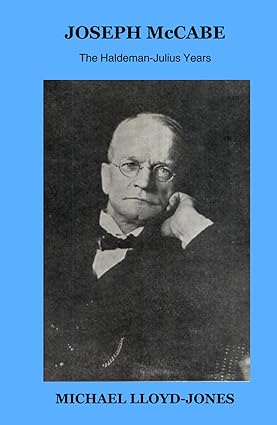
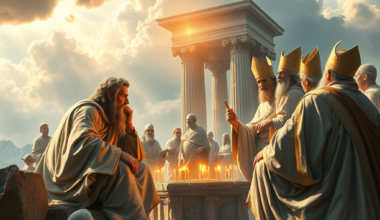


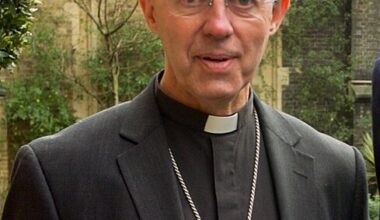

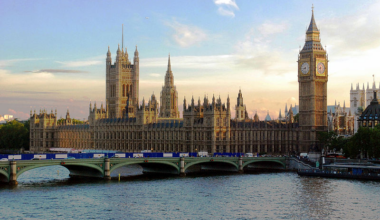
2 comments
I recently found a copy of The Pope’s Favourite, one if not the only romance written by McCabe, I’m very curious to read it.
You have made a good find. It’s one of two McCabe novels that were published, but the only one written under his own name. At the time of his death he left two unpublished novels in manuscript form – a detective story and a ‘western’ – but his executors decided they were unpublishable.
Your email address will not be published. Comments are subject to our Community Guidelines. Required fields are marked *
Donate